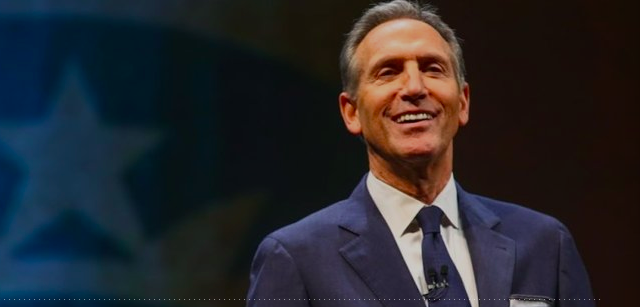This time, CEO's letter writes about high-level adjustments that have a far-reaching impact on the future of Starbucks.
On the 21st of last month, Starbucks announced its results for the third quarter of fiscal 2016. Compared with fairly good revenue and same-store growth in 2015, Starbucks' growth this year has been somewhat disappointing, below analysts' expectations, and the flagging European market has still not been helped.
Beyond the cold data, there is bound to be some scepticism and uproar within the 300000-person multinational. It was against this background that Starbucks CEO Howard Schultz wrote an open letter to employees, which was also posted on Starbucks' official Newrooms for public reference.
The open letter, which begins with Dear partners, is not perfunctory and lists a series of personnel changes and several major changes to the company's strategy that will begin on September 1.
"when the first baking store opened in Seattle, I said it was a metaphor for Starbucks' future in coffee innovation, store design and consumer experience." Schultz wrote. This is used to pave the way for Starbucks' strategy of opening more high-end stores.
In addition to the baking factory stores in New York in 2018, which have been identified in Shanghai in 2017, the selected stores, which currently account for 2000 of the 24000 stores around the world, will also accelerate their opening. Of course, these coffee shops that emphasize the origin of coffee beans and the higher quality of pastries also mean higher average consumption.
Given that Starbucks changed its rules on Starbucks cards in February this year, where members' rewards will be linked to the amount of money spent rather than the number of times spent, the question Starbucks is focusing on is: how to get each consumer to spend more money on it? These are the indicators that can really improve its per-store earnings and make its results better.
Back to Starbucks' focus on high-end stores, it has made a series of high-level personnel changes in order to better implement the plan.
These include the appointment of Cliff Burrows, the regional head of the North American market, as the direct person in charge of the global expansion and development of bakery stores and Zhenxuan stores, while taking into account the high-end bakery brand Princi, which was acquired in July, and the tea brand Teavana, which is expected to launch in the global market by the end of this year.
After that, Cliff Burrows will be responsible for the growth and operation of these stores, and Schultz will directly lead the design and user experience team.
This is a new job Schultz has found for himself, which largely reflects his attention to Starbucks' high-end line and Starbucks' expectations for this product line. In contrast, after a burst of praise for COO Kevin Johnson in the letter, Schultz entrusted him with the job of coordinating the responsibilities of the senior team, giving him time to do something else.
Of course, after focusing on the separation of high-end stores, someone is also needed to be responsible for the revenue and growth of normal stores, and John Culver, head of the Asia-Pacific region, became the head of the new Global Retail Organization department.
Apart from the weak European market leaders, the other two regional heads have been appointed to new positions and have not announced who will replace them as regional heads. One guess is that Starbucks may break the division of regional markets in the future. Given the European market where the results were targeted last quarter, the adjustment does not seem too surprising.

Important Notice :
前街咖啡 FrontStreet Coffee has moved to new addredd:
FrontStreet Coffee Address: 315,Donghua East Road,GuangZhou
Tel:020 38364473
- Prev

The Japanese man died from drinking too much coffee. It is only healthy to drink coffee like this.
A man in his 20s in Kyushu, Japan died of caffeine poisoning after drinking a refreshing caffeinated drink for a long time, Japanese media reported. The Ministry of Food Safety of Japan's Ministry of Health and Labor said it had not heard of caffeine poisoning deaths in China, and the above case may be the first reported death from long-term caffeine poisoning in Japan.
- Next

China's coffee has entered the era of boutique, coffee joining will set off "the third wave"
Boutique coffee shops are becoming more and more popular on the west coast of the United States. After the advent of instant coffee and the debut of coffee franchise stores, this high-quality coffee shop, which is particular about the purchase and brewing of coffee beans, is called the third wave in coffee history. While the influence of boutique coffee franchisees is gradually expanding, China, as the largest coffee seller in the world, is destined to set off boutique coffee to join.
Related
- Being chased out of the rain in front of Starbucks?! Store: Sheltering from rain under umbrellas poses a safety hazard
- The white moonlight has changed?! Lucky launches "Big Winter Pear American"
- Hand-brewed coffee three-stage method, high-sweet and universal brewing method to share! What does the high sweet water level of hand-brewed coffee mean?
- What is the difference between raw, refined and full espresso coffee? How to extract espresso and taste good?
- A complete list of coffee bean names and their meanings! What is Yejia Shefi coffee? Where is Mantelin coffee?
- What grade does Arida Manor Kaduai coffee beans belong to? What treatment is Arida ASD slow anaerobic sun exposure?
- The milk tea cup becomes smaller?! Overlord Tea Girl launches a new "Return to Yunnan" series
- Accused of selling counterfeit and high-priced coffee beans! Well-known boutique coffee brand "Oukelao" bowed and apologized!
- How to make espresso dumplings? Can I eat coffee and glutinous rice balls together?
- Save the unformed and stagnant powder cakes in one second! What is the problem with stagnant water in the powder bowl of the espresso machine?

